The 9 days of Navratri
Navratri, a nine-day celebration of goddess Durga, is held twice a year. Chaitra Navratri, the first Navratri of the year, is observed in the months of March and April. Because it occurs in the spring, it is also known as Vasant Navratri. While the fall Navratri celebration is referred to as Sharad Navratri.

'Navratri' literally refers to the nine nights of the celebration. Nine manifestations or avatars of Goddess Durga are worshiped over these nine days/nights. The festival commemorates and celebrates Goddess Durga's victory over the demon Mahishasura in combat.
Significance of 9 days of Navratri
Navratri, often known as the "nine nights," is a period of the year when you can enjoy profound relaxation. This profound slumber provides relief from all types of annoyances, as well as deep relaxation and creativity.
The puja we do throughout the nine days of Navratri honors the Devi and expresses our thanks to the Mother Divine. We give up all worldly activity and enter deep devotion while attending the puja.
"There is Devi energy (Shakti) within all of us," states Gurudev Sri Sri Ravi Shankar. Devi isn't someplace else or in another world. If we sit deeply in meditation, the glow within our bodies will brighten and radiate outside. It's Devi Puja."
Navratri Day 1: माँ शैलपुत्री
Navratri color of the Day - White

The purpose of the first day is to worship Goddess Shailaputri. She is a manifestation of Parvati, the daughter of Raja Himavan, the mountain monarch. The meaning of 'shaila' is remarkable, as in reaching vast heights or climbing a mountain. In this form, the goddess rides a bull while holding a trident (Trishul) and a lotus. The worship of Goddess Shailaputri is performed in order to achieve a high level of awareness.
Navratri Day 2: माँ ब्रह्मचारिणी
Navratri color of the Day - Red
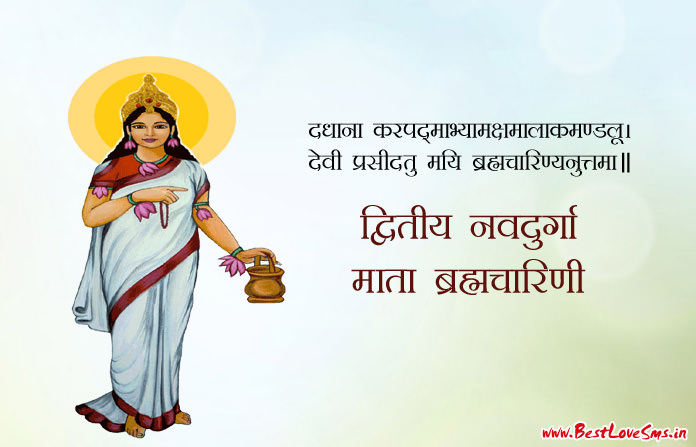
The second day is dedicated to the worship of Goddess Brahmacharini. This is the avatar of Parvati in which she underwent severe penance. This goddess is a wellspring of knowledge and wisdom, and she is adorned with rudraksha.
She is holding a rosary in one hand and a water pitcher (kumbh) in the other. Because 'Brahma' represents heavenly consciousness, when combined with ‘achar’ (which means conduct), this day becomes especially hallowed for meditation.
Navratri Day 3: माँ चंद्रघंटा
Navratri color of the Day - Royal Blue
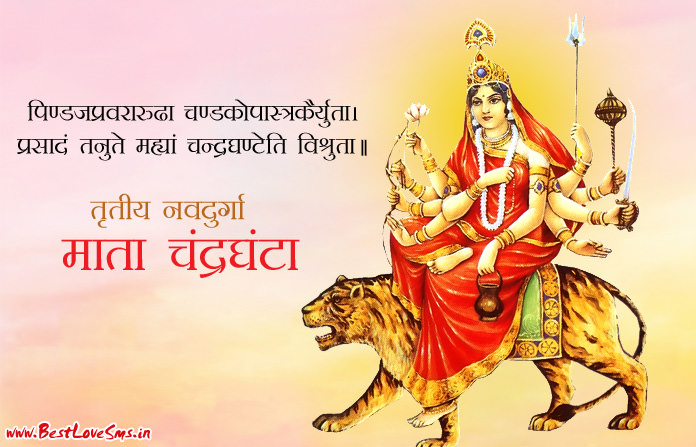
On the third day of Navratri, Goddess Chandraghanta reigns. This is a representation of Goddess Durga on a tiger, representing 'shakti' or power. Her hands produce mudras or motions in this position, one of blessing and the other of averting crimes and damage.
The name 'Chandra' refers to the moon, which signifies the intellect. The Goddess, who wears a half-moon on her brow, represents ultimate happiness via knowledge and emotional equilibrium.
Navratri Day 4: माँ कूष्माण्डा
Navratri color of the Day - Yellow
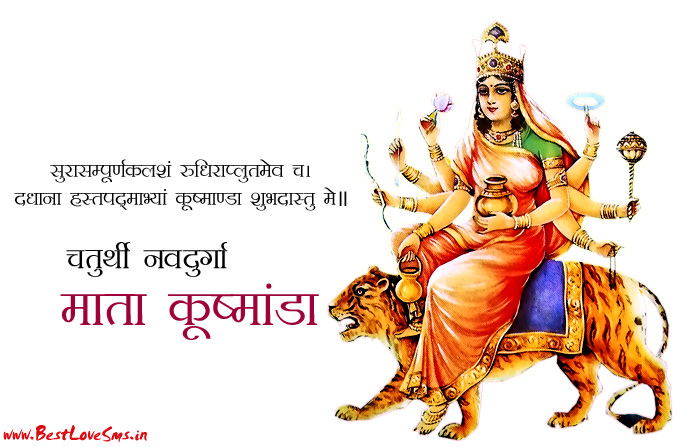
Worshippers invoke the blessings of Goddess Kushmanda on the fourth day. Her name refers to the creation of the cosmos from a celestial egg. In this form, he has eight arms, one carrying a rosary and the others wielding weapons, while she is mounted on a tiger. She bestows vitality on those who revere her.
Navratri Day 5: माँ स्कन्दमाता
Navratri color of the Day - Green
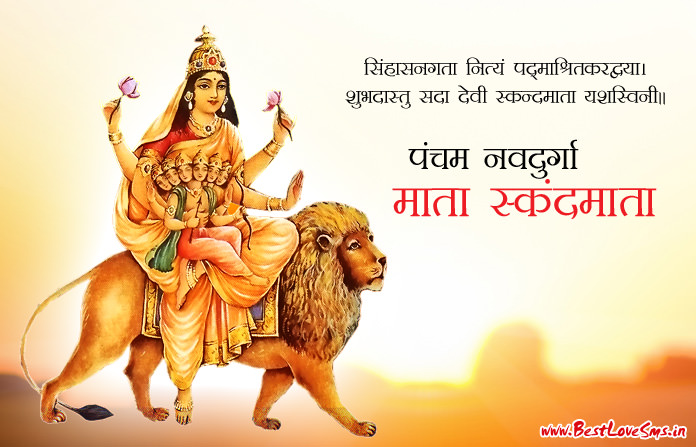
This day is dedicated to the adoration of the goddess's motherly form, Goddess Skandmata. Her name translates to "mother of Skanda," and he is pictured seated on her lap in this form, with a lion as her vehicle.
It is stated that worshiping the goddess in this form will bring you wisdom, money, power, and prosperity. She has four hands, two of which hold lotuses and the other two are in mudras guarding worshipers and bestowing boons.
Navratri Day 6: माँ कात्यायनी
Navratri color of the day - Grey
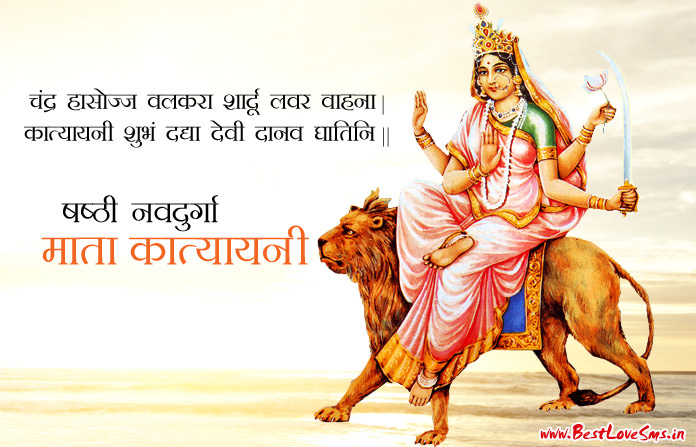
The goddess, as Goddess Katyayani, assumes a divine form to eradicate all evil forces in the cosmos. She defeats the demon Mahishasura in this incarnation. Her name is derived from the sage Katyayan, in whose ashram she spent time doing penance.
She is summoned in prayers to end all of our inner torment. Her chariot is a lion, and she has three eyes and four arms, two of which are in defensive and bestowing motions, while the others are clutching lotuses.
Navratri Day 7: माँ कालरात्रि
Navratri color of the Day - Orange
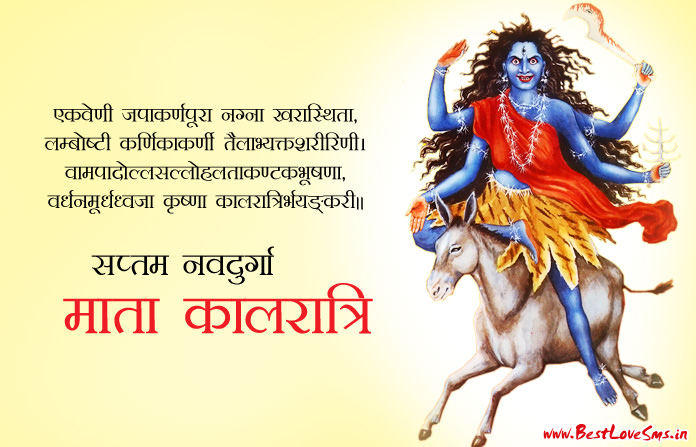
This day is dedicated to the worship of Kalaratri, the fiercer version of the goddess who embodies the black night. With this devotion, worshippers can sleep well at night since the goddess dispels their fear of darkness. In this form, the dark-skinned goddess has abundant hair and is riding on a donkey with four hands. Two are holding a cleaver and a torch, while the other two are giving and defending mudras.
Navratri Day 8: माँ महागौरी
Navratri color of the Day - Peacock Green
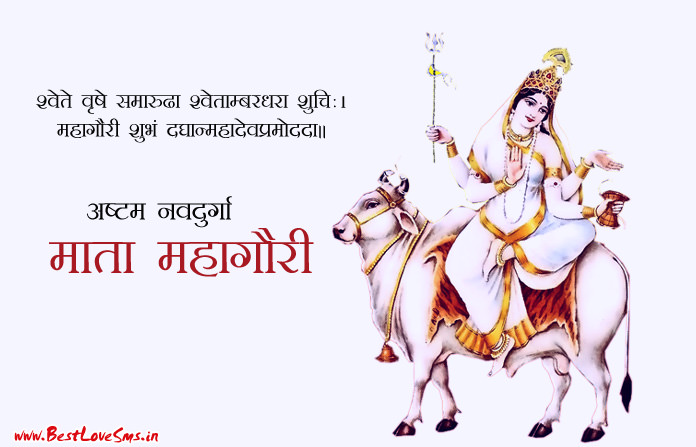
Goddess Mahagauri represents inner beauty and liberation. She also represents nature's vitality, which drives life ahead. Worshiping her on the eighth day means encouraging that force within you to urge you onward and liberate you. Her face is serene and compassionate, and she holds a drum and a trident in her hands. She is riding a bull.
Navratri Day 9: माँ सिद्धिदात्री
Navratri color of the Day - Pink
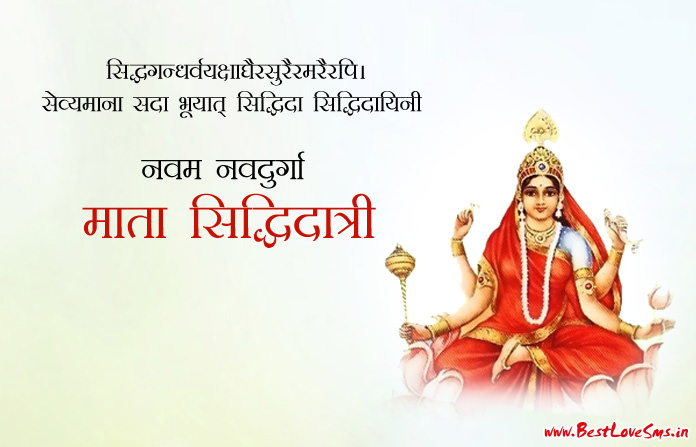
The ninth day is dedicated to Goddess Siddhidatri's devotion. She may grant her worshipers 26 various wishes while sitting on a lotus. She is revered for venturing beyond the rational intellect to discover more. It is believed that she can make the impossible feasible.














Leave a comment
Please note, comments need to be approved before they are published.